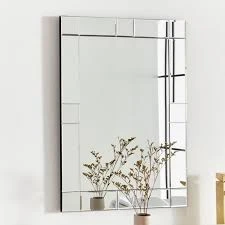

The Rising Demand and Pricing of Automatic Frosted Glass
In recent years, the demand for automatic frosted glass has surged, transforming how we think about privacy, aesthetics, and functionality in modern architecture and design. This innovative material provides an elegant solution for myriad applications, from office buildings to residential spaces, and its pricing reflects a combination of advanced technology, material costs, and market trends.
Understanding Automatic Frosted Glass
Automatic frosted glass is a smart material that can switch between transparent and opaque states at the push of a button or through automated sensors. This technology typically employs a mechanism using liquid crystal films, which, when powered, creates a frosted appearance that obscures visibility while still allowing light to penetrate. The advantages of this glass are numerous it enhances privacy without compromising brightness, can be used as a projection screen for presentations, and adds a modern flair to interiors.
Factors Influencing Price
The price of automatic frosted glass is influenced by several factors, including the technology used, production methods, and market dynamics.
1. Technology and Production The manufacturing process of automatic frosted glass involves sophisticated technology that includes liquid crystal films and sensor systems. This advanced technology not only makes it more expensive to produce compared to regular glass but also necessitates high-quality materials to ensure durability and performance. As the technology innovates further, prices may ebb and flow based on these advancements.
2. Customization and Installation The cost of automatic frosted glass can also vary based on customization. Architects and designers often require tailored solutions to meet specific client needs or design aesthetics. Such custom work can increase both the manufacturing costs and the installation complexity, further driving up the overall price.

3. Market Trends As the trend for sustainable and tech-oriented architecture rises, the demand for automatic frosted glass increases. With more people seeking out modern designs that offer functionality and style, suppliers are likely to raise their prices to align with demand. Moreover, as economies grow and construction projects rise, competition for high-quality materials may create fluctuations in pricing.
4. Geographic Factors Prices can also vary regionally based on local economies, logistical costs, and availability of suppliers. In urban areas with booming construction sectors, prices may be elevated due to high demand, whereas in rural areas, the costs could be lower due to reduced competition.
Market Outlook
The market outlook for automatic frosted glass appears positive. As businesses continue to prioritize employee well-being and creativity in workspace designs, the adoption of automatic glass systems is expected to increase. This preference is supported by the growing trend of multifunctional spaces, where adaptability is key.
Furthermore, innovations in smart technology may lead to enhanced features in automatic frosted glass, such as integrated smart home capabilities that could appeal to consumers. This potential for further innovation suggests that while prices may remain high in the short term, long-term advancements could lead to more competitive pricing as the technology becomes more standardized and widespread.
Conclusion
In conclusion, the price of automatic frosted glass is a reflection of various factors including technological advancements, market demands, and the costs associated with customization and installation. As more individuals and businesses seek modern solutions for aesthetic and functional needs, the importance of this product in architectural design will likely grow. While potential fluctuations in price may occur as the market evolves, the overall trend indicates a robust future for automatic frosted glass. This innovative solution not only meets the demands of modern living but also enhances the quality of the spaces we occupy, making it a worthwhile investment for those seeking to harmonize functionality with design.